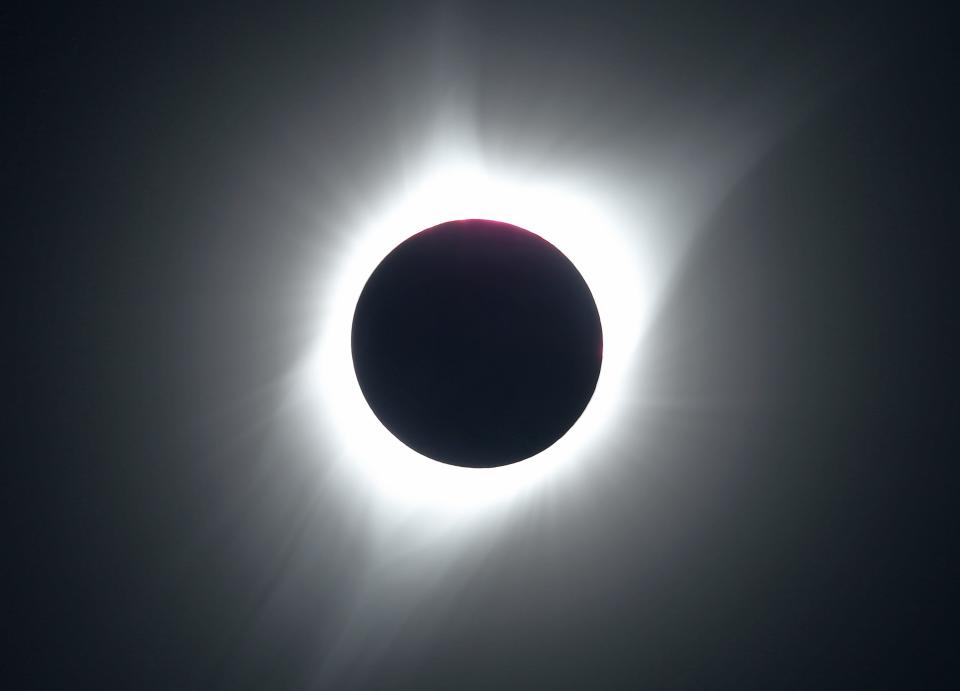The path of totality for the eclipse has been updated. What will Delaware be able to see?
The path of the totality of the total solar eclipse on April 8 has shifted based on new calculations, but Delaware remains outside of the main action.
Here’s what you need to know about the updated path of totality.
What is the path of totality?
During a total solar eclipse, the Moon passes between the Sun and Earth and completely blocks the face of the Sun, according to NASA.
No matter the time of day it is, the sky will darken as if it were dawn or dusk. Weather permitting, people along the path of totality will see the Sun’s corona, the outer atmosphere, which is usually obscured by the bright face of the sun.
On April 8, the duration of totality will last four minutes and 27 seconds, nearly double that of the total solar eclipse seen in the United States in 2017, according to Great American Eclipse.
What areas are in the path of totality for the total solar eclipse?

The path of totality — when the moon completely covers the sun, creating a total eclipse — runs from Mexico (Sinaloa to Coahuila) to the United States (Texas to Maine) to Canada (Ontario to Newfoundland), according to TimeandDate.com.
Areas not directly in the path of totality, but near it, will experience a partial eclipse before and after the time totality is expected. A partial eclipse will be visible across nearly all of the U.S. and a small portion of western Europe.
What is the new path of totality?
On March 30, Forbes reported on an updated map of the path of totality for the eclipse on April 8.
The new map of totality, published by expert John Irwin, uses updated figures for the radius of the sun – which may be larger than scientists thought – to more accurately depict where exactly totality will fall. These calculations resulted in an updated path of totality that is narrower than previously reported, based on factors like the topography of the Earth and the moon.
According to Forbes, who spoke with eclipse calculator Luca Quaglia, the bigger the sun’s diameter is, the smaller the moon’s shadow will be, resulting in a narrower path of totality.
The updated path generally follows the same arc as previously reported, but some cities thought to have been directly in the originally forecast path are now slightly outside of the main path and will no longer see a maximum eclipse.
In the map above, the yellow line depicts the eclipse centerline. The orange lines show the true limb eclipse limits, creating the updated path of totality. The red lines are the traditional limits of the path of totality as previously forecast. True totality will remain visible between northern and southern limits indicated by the orange lines on the map, according to Irwin.
Eclipse tips: 5 things to keep in mind while watching the total solar eclipse, according to an expert
Is Delaware impacted by the new path of totality?
Delaware was initially reported to be outside of the path of totality. Even with the updated map, Delaware remains outside of the main eclipse path and will only see a partial eclipse.
Got a tip or a story idea? Contact Krys'tal Griffin at kgriffin@delawareonline.com.
This article originally appeared on Delaware News Journal: Eclipse path of totality updated. What will Delaware be able to see?

